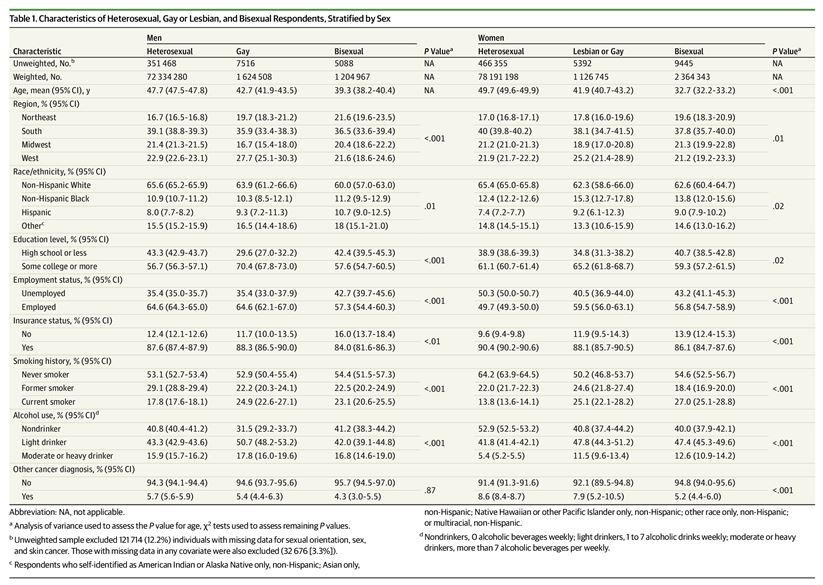The authors of the paper argue that is a reason to ask about sexual orientation and gender identity in national health surveys. The Centers for Disease Control (CDC) uses the BRFSS to collect information about risk factors and behaviors among adults. About 450,000 adults are interviewed by telephone by the BRFSS each year. Beginning in 2014, the BRFSS began using the sexual orientation and gender identity (SOGI) module to include questions about sexual orientation and gender identity. This module was administered in 37 states. Due to privacy concerns CDC recently considered stopping implementation of the SOGI module for future BRFSS surveys.

https://jamanetwork.com/journals/jamadermatology/fullarticle/2760333
The scholars compared skin cancer rates among heterosexual men to rates in gay or bisexual men and compared rates among heterosexual women to lesbian or bisexual women. Rates of skin cancer were 8.1 percent among gay men and 8.4 percent among bisexual men, statistically higher than the rate of 6.7 percent among heterosexual men. Skin cancer rates were 5.9 percent among lesbian women and 6.6 percent among heterosexual women, which was not a statistically significant difference. However, the rate of 4.7 percent among bisexual women was statistically significantly lower than heterosexual women.
The authors note that the data are based on self-reported skin cancer diagnoses, which have not been confirmed by a physician. The SOGI module was also only implemented in 37 states, so may not be generalizable to all states.
What accounts for the difference? The BRFSS survey does not collect information about risk factors for skin cancer, such as UV exposure, Fitzpatrick skin type (a measure of skin color and susceptibility to sun burn), or HIV status but smaller studies have reported higher usage of indoor tanning beds among sexual minority men, a known risk factor for skin cancer.






Comments